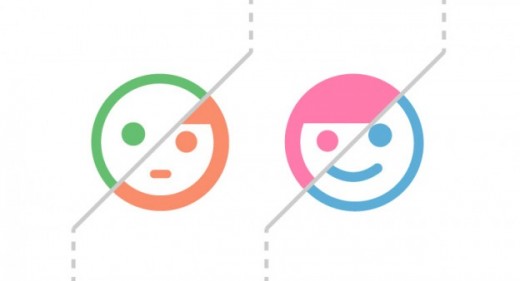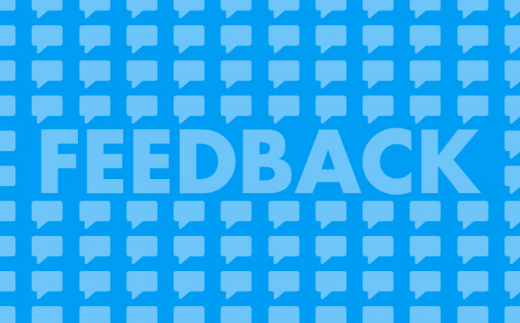
Shannon is the Chief Content Officer for CloudPeeps, where she crafts words, creates strategies, and recruits loyal brand advocates. She’s also the founder of asongaday.co, hand-curated songs delivered to your inbox, and an enthusiast of live music, sunshine, craft beer, and quality content. This post originally appeared on the Cloudpeeps blog.
In business school, you’re often taught to lead with numbers and stats when presenting yourself or your work in order to prove your value. This usually means sticking to the status quo without showing too much of yourself to your audience.
But it pays to be genuine. It pays in richer experience and deeper connections, which in turn lead to stronger customer relationships and business growth.
Look at what Groove has done in building their blog — an industry-leading resource for startup and growth marketing advice, as well as one of the most-used examples of effective content marketing.
Why is it so successful? Because it’s a transparent and genuine account of the team’s experiences — what they’ve done right, and more importantly, what they’ve done wrong and lessons learned in their journey to where they are today.
If Groove just shared their numbers and tactics without sharing the pain felt in getting there, and the joys of celebrating the successes, they wouldn’t have had as much impact.
In this post, we’ll look at the importance of genuinity and what it means to be genuine as a professional. Then, we’ll reveal the subtle art of being genuine.
Why being genuine is good for your career

For example, when CloudPeeps first raised money, Kate felt like she couldn’t do anything authentic, vulnerable or genuine. She felt as if she couldn’t post pictures of her weekend travels online, have fun or truly express herself – because she felt like she had to be working ALL THE TIME and be in professional mode non-stop.
Then she had a hearty conversation with our lead investor Renata who advised Kate to just be herself, speak up, do what she does best, and to have fun, because at the end of the day, people are attracted to fun and authenticity.
Kate had a similar talk with me when I first launched my side project. We were talking about partnerships and the intimidating meetings I was scheduling. She gave me the confidence necessary to be myself, and assured me that’s why someone would want to get involved — they would see the passion and care I put into it if I was just genuinely myself.
Being genuine makes you more relatable and approachable, which in turn makes it easier to build relationships with your readers, viewers, clients, etc. And strong relationships mean customers sticking with you rather than moving to the less costly competitor, because they’ve invested emotions in you — an asset far more valuable than money.
Not to mention, building a culture of relationship building within a company makes recruiting much easier in the long run. For example, the CloudPeeps team as it stands was built entirely on existing relationships built over the years.
Being genuine also means you can tell your own story the way it’s meant to be told — through your eyes. It means letting down your guard — thinking less, and doing more. Your story still needs to be well thought out and refined for the greatest impact. However, once you nail down the story that resonates best, you will spend far less time preparing presentations and thinking about how you’re going to approach relationships.
Who knew being genuine could also save you time?!
The art of being genuine
Here’s five guiding principles for ensuring that your left brain doesn’t get in the way of you demonstrating your true values and personality.
1) Care
The first step to being genuine is to care. If you don’t care about something or someone, it’s impossible to build a genuine connection with it or them. If you don’t care about a relationship or a project, drop it. If you don’t, you’re going to be in a constant struggle and your energy is going to be drained trying to make it work…and it never will. Or, at the very least, it’s not going to be your best work.
2) Be yourself
Obvious, right? However, if you’re not comfortable with a situation, you’re going to put up a guard that prevents people from getting to know the real you. I know I’ve done this. Try to remind yourself that these people are exactly that — fellow humans.
Care less about conforming to those around you and being liked, and more about being yourself. As a result, you’ll be seen for the unique value you bring to the table. One of my favorite freelance professionals and Internet friends, Paul Jarvis, once wrote:
“While I don’t know if being open and expressive helps the bottom line of my business, I do know—for 100% certain—that it attracts the type of people I enjoy working with and interacting with. There is no doubt that I attract these sorts of people, because it’s easy for them to see what I stand for. And more importantly, they see themselves standing on my side of the line.” [More of Paul’s sage advice can be found here.]
Ask yourself: What type of clients and partners do you want to attract?
3) Engage and listen
In order to genuinely care about someone, it helps to actually know a thing or two about them. Ask your clients or audience questions, then truly listen. Don’t be thinking about your next question, really listen. Then ask them more about what they just said. Get to know them, online or off, professionally or personally.
The idea here isn’t to pretend that you care, it’s to actually care. Once you care, the engagement will come natural.
4) Ask for input and feedback
As our friends at GetResponse point out, asking your audience for feedback creates open and honest communication. It makes them a part of the process, and therefore closer to you. After receiving feedback, ask questions about their insights — start a discussion around it. Really show them that you care by executing on the ideas that align with your goals.
5) Don’t be afraid to be vulnerable
Being vulnerable can be a terrifying experience. Putting yourself out there to be judged by anyone and everyone who’s paying attention is not an easy feat. But by sharing your experiences, you’ll build deep connections that could never be built without them. Don’t rush it though. It’s important that this is done on your own time. Check out this powerful TED Talk from Brene Brown on the power of vulnerability:
For example, our own Peep Carrie wrote this very powerful and emotional piece of writing that I still think about regularly. And honestly, we’ve all been there.
A friend of mine just shared a presentation he gave on creativity and mental health with me, in which he explains a life experience that I have definitely been through. I immediately felt closer to him as a friend than I ever had because he shared that.
I myself just shared my first product demo publicly. I was uncomfortable writing it, and even more uncomfortable sharing it. I was making myself vulnerable to judgement and critique. Obviously, I only received positive and reaffirming feedback because people are generally kind. But at the end of the day, it was therapeutic and helpful.
Wrapping it up
Being genuine just means caring and being yourself. It means focusing less on others’ perception of you, and more about getting to know them, and letting them get to know you. When working with clients or employees, keep things professional of course, but keep things real. Open the lines of communication and most importantly, be honest with each other. Set deadlines, set expectations, share goals and visions — the rest will come.
Read Next: 5 ways to keep customers engaged before they slip away
Get the TNW newsletter
Get the most important tech news in your inbox each week.








